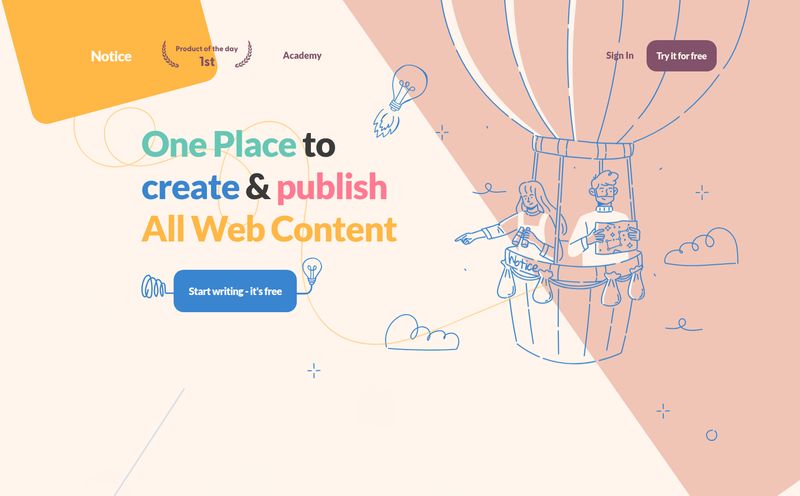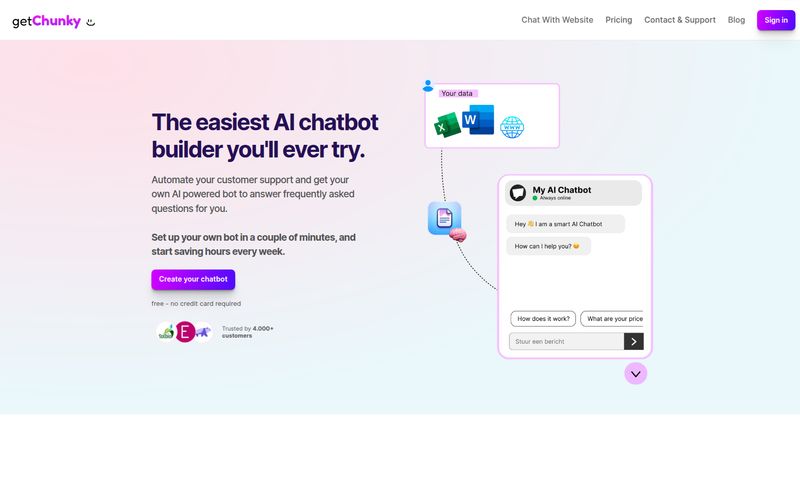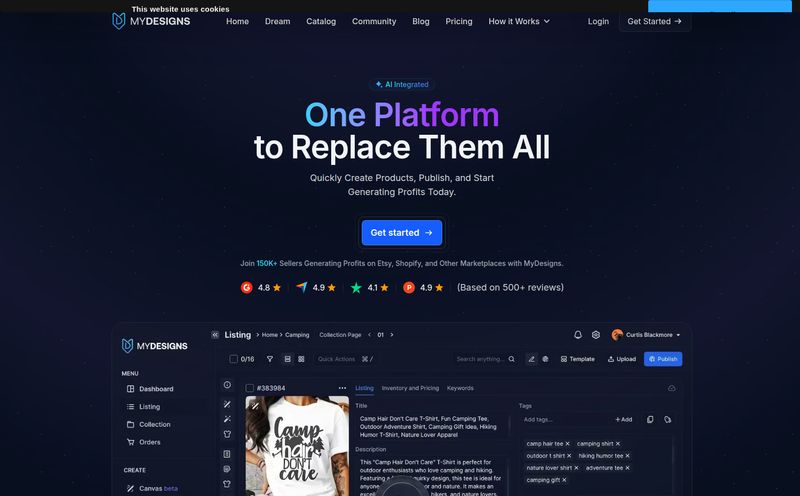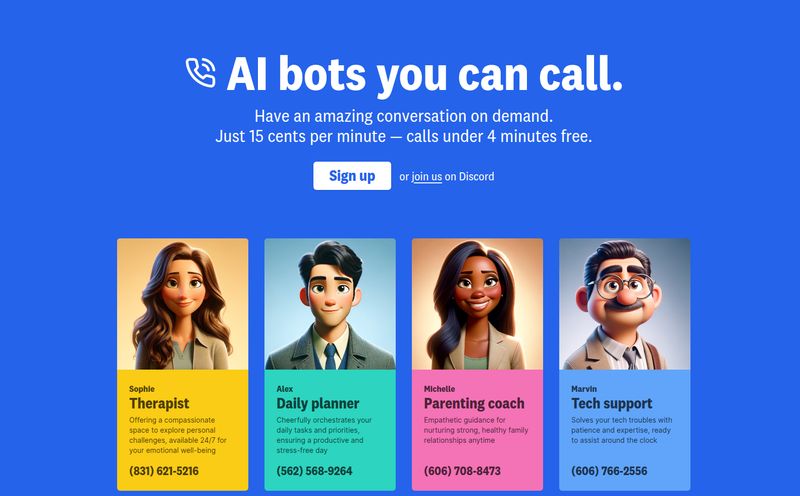We’ve all been there. You’re in a sprint planning meeting, and a new feature request drops. It’s ambitious. It’s exciting. And the technical brief for it could fit on a sticky note. That’s when the cold dread creeps in. The endless back-and-forth, the ambiguous requirements, the inevitable architectural drift that leads to… well, spaghetti code.
For years, we've patched this problem with more meetings, more wikis, and more diagramming tools that feel like they were designed in 1998. But what if we could skip most of that? What if you could have a senior architect on call, ready to instantly translate a simple idea into a detailed, robust technical plan? That’s the promise of a new tool that’s been on my radar: Stack Studio.
I’ve seen a lot of AI tools pop up, especially in the last year or two. Some are brilliant, some are… less so. But Stack Studio caught my eye because it’s not trying to just write code for you. It’s trying to help you think. It’s tackling the root of so many development headaches: the plan itself.
What Exactly is Stack Studio? (And Why Should You Care?)
In the simplest terms, Stack Studio positions itself as an AI-powered software architect. It’s a platform designed to connect directly to your codebase. You give it a prompt—a feature idea, a question about your architecture—and it gets to work. It doesn’t just spit out a block of code; it generates detailed technical designs, documentation, and architectural blueprints. We're talking UML diagrams, sequence diagrams, ERDs, API specs, the works.
Think about the hours, no, days spent manually creating those. It’s tedious work that’s crucial for alignment but is often the first thing to get skipped when deadlines are tight. Stack Studio aims to make it instantaneous. Its a common problem, and this feels like a very modern solution.
How Stack Studio Transforms Your Workflow
This isn't just about making pretty diagrams. It’s about fundamentally changing the workflow from idea to implementation. I see a few key ways it does this.
From Vague Ideas to Concrete Plans, Instantly
This is the big one for me. The tool’s core is its feature planning capability. You can describe a new feature, and the AI analyzes your existing codebase to understand the context. Then, it generates a full technical specification. It identifies the services that need to change, what new database tables you might need, and how different components will interact. This moves the conversation from “how could we build this?” to “here’s the blueprint, let’s poke holes in it.” A much, much more productive starting point.
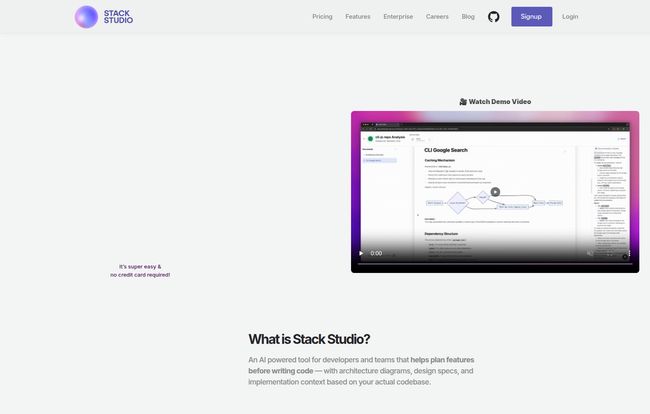
Visit Stack Studio
Goodbye, Manual Diagramming Hell
I have a love-hate relationship with UML diagrams. I love having them, I hate making them. The fact that Stack Studio can automatically generate various diagrams based on my existing code or a new feature plan is a massive quality-of-life improvement. Need an Entity-Relationship Diagram (ERD) for that new service? Done. Need a sequence diagram to explain a complex user flow to a junior dev? Just ask. This visual documentation is invaluable for onboarding and maintaining clarity on large projects.
A Single Source of Truth for Your Team
Because Stack Studio connects to your Git repository, it has the potential to become a living, breathing source of truth for your architecture. It’s not a static Confluence page that’s outdated three weeks after it’s written. It provides cloud-based collaboration features, so your entire team can see the same designs, ask in-depth questions about the codebase, and stay aligned. The tool's ability to provide prompt-ready context for other AIs like Copilot or Claude is also a clever touch, making those tools even more powerful because they have the right context.
The Nitty-Gritty: Key Features I'm Excited About
Diving into the feature list, a few things really stand out. The platform claims to support every language, framework, and architecture. That's a bold claim, and one I'm keen to see tested in the wild with some of the more esoteric stacks out there. But if it holds up, it makes the tool incredibly versatile.
The integration with AI assistants is another huge plus. I use GitHub Copilot daily, and its biggest weakness is a lack of high-level architectural context. If Stack Studio can feed it a detailed blueprint before I start coding, the suggestions I get from Copilot could become exponentially better. It’s like giving your AI pair programmer the full set of architectural drawings instead of just letting it guess.
Finally, the promise of “No More AI-Generated Spaghetti Code” is more than just a marketing line. It’s a philosophy. By focusing on the plan before the code, it encourages a more thoughtful, structured approach to building software—something that can get lost in the rush to just get things working.
The Elephant in the Room: Connecting Your Codebase
Okay, let's talk about the first thing any security-conscious engineer will ask: “You want me to connect my entire codebase to a third-party cloud tool?” It’s a valid concern. My CISO would certainly have questions.
Stack Studio seems very aware of this. On their site, they state clearly: “Your Code Stays Secure!” They specify that they only store embeddings and metadata facts, not your actual source code. The documents you generate are stored, but they emphasize that no personally identifiable code is kept. This is a critical distinction. It's using an abstraction of your code to understand its structure, not just copying it wholesale. For many teams, this will be enough to get past security reviews, but it's definitely something you'll want to verify with your own compliance standards.
What About the Cost? Stack Studio Pricing
Here’s where things get a bit mysterious. As of my writing this, the pricing page for Stack Studio is... blank. This isn't uncommon for a tool that's still gaining traction or is in a heavy development phase (the copyright notice says © 2025, which is an interesting choice).
My guess? We’ll likely see a tiered model emerge. Probably a free tier for individual developers or small open-source projects to get people hooked, followed by team and enterprise plans with more advanced collaboration, security, and support features. For now, you’ll have to sign up and see for yourself.
The Flip Side: A Few Things to Keep in Mind
No tool is perfect, especially a new one. The biggest thing to remember is that this is a cloud-based platform. No internet, no AI architect. That’s standard for most SaaS tools today but worth noting. It also seems to be a relatively new product. While the feature set is impressive, early adopters might encounter the occasional bug or a feature that's still being polished. Patience is a virtue, as they say.
The main hurdle, as discussed, is getting comfortable connecting your codebase. Even with their security assurances, it's a step that requires a degree of trust.
My Final Take: Is Stack Studio Worth the Hype?
So, what’s the verdict? I’m optimistic. Genuinely. The problem Stack Studio is trying to solve is one of the most persistent and painful in software development. The disconnect between an idea and a viable technical plan is where projects go to die.
By using AI to bridge that gap, Stack Studio isn’t just another “AI coder.” It’s an “AI planner,” an “AI architect,” and an “AI documentarian.” If it delivers on even 80% of its promise, it could become an indispensable tool for development teams who want to build thoughtful, scalable, and well-documented software without the soul-crushing overhead. It’s one to watch, for sure.
Frequently Asked Questions about Stack Studio
- What is Stack Studio?
- Stack Studio is an AI-driven tool that acts as a software architect. It connects to your codebase to help you plan new features, generate technical specifications, create architectural diagrams like UML and ERDs, and answer complex questions about your code.
- How does Stack Studio keep my code secure?
- According to their website, they do not store your raw source code. They only store embeddings (numerical representations) and metadata facts about your code to understand its structure. This approach is designed to protect your intellectual property.
- What languages and frameworks does it support?
- Stack Studio claims to be language and framework agnostic, meaning it should work with virtually any modern tech stack you throw at it, from Python/Django to JavaScript/React and beyond.
- Can I use it with my existing AI tools like Copilot?
- Yes, it's designed to complement tools like GitHub Copilot, Cursor, and Claude. It provides them with high-level architectural context, which can make their code suggestions more accurate and relevant.
- Is Stack Studio free?
- Currently, their pricing information is not publicly available. It's best to visit their website to check for the latest on any free trials, beta access, or pricing tiers they may offer.
- What kind of documents can it create?
- It can generate a wide range of technical documentation, including full technical specs, UML diagrams, sequence diagrams, Entity-Relationship Diagrams (ERDs), and API specifications.
Conclusion
In a world flooded with AI tools, Stack Studio stands out by not just focusing on the code, but on the blueprint behind it. It’s a tool built on the premise that a good plan is the best way to avoid a mess later. For any developer or team lead who has ever felt the pain of poor planning and nonexistent documentation, this tool feels less like a gadget and more like a necessity. It might just be the architect your team has been waiting for.
Reference and Sources
- Stack Studio Official Website: https://www.stack.studio/
- GitHub Copilot: https://github.com/features/copilot
